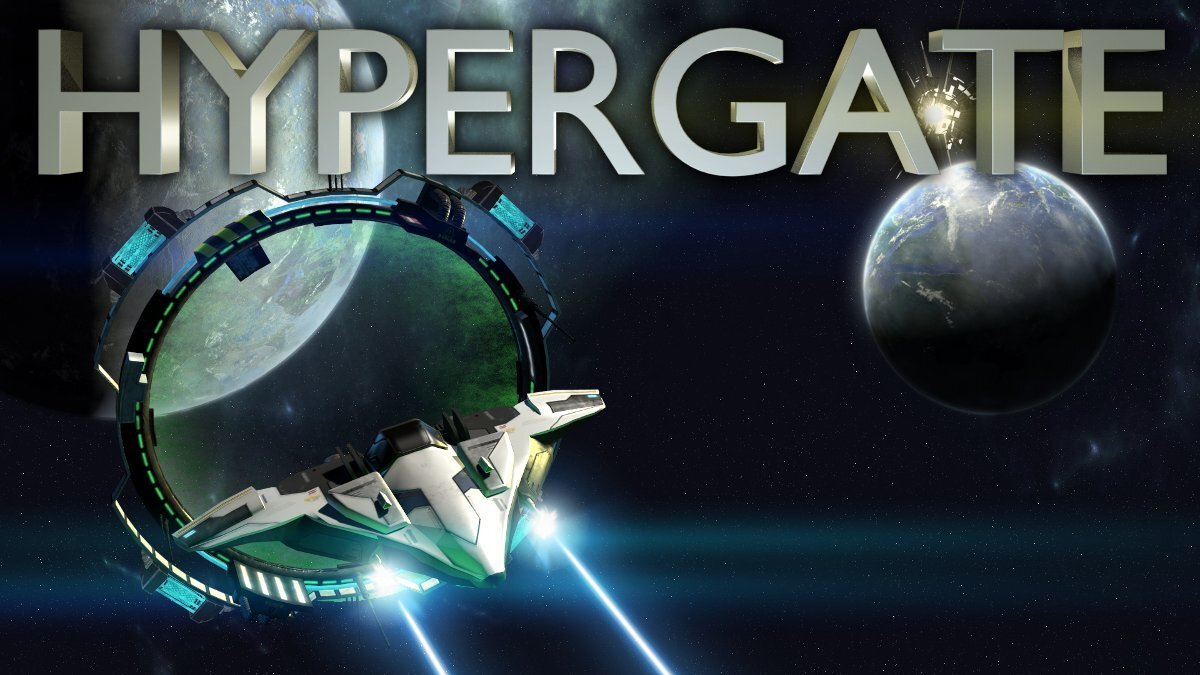Dear readers, we have a guest joining us today. My good friend Geoff Nagy offered to write a guest post about the steps to take immediately before and after your game launches to position it for success.
Geoff Nagy is a smart, smart guy, a robotics PhD and a hobbyist gamedev with a successful launch under his belt. His game Hypergate is an arcade space shooter for Steam.
This isn’t a topic I’m well placed to speak on. While I’ve spent a considerable amount of time working with gamedevs and hanging out with them at coworking events and conferences, I’m not a gamedev myself and have never released a game. This is coming from someone who has been it, seen it, and done it.
Here’s what he has to say.
Geoff Nagy on Launching a Game

If you’ve never released a game before, there are probably a few things you should know that will make the entire journey easier for you!
I develop my games entirely on my own as a hobby, and so for some more experienced readers these points may seem elementary. However, I’ve released two games on Steam and these are things I didn’t know at either time but wish that I had.
These tips can be divided into two categories: things you should be done before release, and things you should continually do after release.
Let’s talk about what you should do before release. It’s important to first mention that players care about the amount of effort you’re putting into your game. Not because they necessarily care about your personal endeavours and goals, but because they want to know that your game is worth spending their hard-earned money on! Players want to make a good investment and don’t want to feel as if they’ve been tricked into buying anything that sells itself as something that it’s not.
Before Launch
1) Put up a Steam Store page as soon as you have high-quality screenshots and at least one good-looking trailer. The trailer should show typical gameplay. Don’t make it seem like the game is more than it really is. If it’s an action game, make sure your trailer shows that.
I once made the mistake of making one of my games look like it had a substantial story-driven component, and some people were disappointed to find out it was an arcade-style action game. Be honest in descriptions about what the game is, and what it isn’t. Players may feel tricked otherwise, and you may even get negative reviews because of it.
2) Allow complete playability or UI customization in your game. Players have a wide variety of screen resolutions and preferred keyboard and controller layout schemes. Not allowing complete customization might make you look lazy, and players don’t want to buy games from lazy developers. Also, always implement full controller support wherever possible, so that users can navigate menus and play the entire game without a keyboard or mouse. Some players will avoid buying your game until you do.
3) Playtest with friends, at least twice. Spend some money on pizza and drinks, and invite your friends over to play your game one evening, preferably one at a time, without giving them any input or instructions other than “Here’s my game, now play it.”
This is a wise investment of your time and money: it allows you to see how players interact with your game when no information is given to them. It’s a rich data set that you would normally not have access to—once real customers start playing your game, you’d otherwise have no idea how they’d interact with it. During testing, your friends will almost certainly do unexpected things you’d never thought of, and will probably have a lot of requests for improvements. Take extensive notes. Don’t get defensive.
4) Tags are very, very important. I have to thank Bacioiu Ciprian from Twitter (@zapakitul) for this knowledge. You should have around 10-15 tags on your Steam Store page, and not just generic ones. Look at games that are similar to yours, and put them into this list on this website: https://notyetgames.gitlab.io/steam/tags.html. It will generate a list of tags that these games have in common, and you should consider using them. This will help your game get noticed and wishlisted.
5) Submit a working version of your game as soon as possible to Steam for review by Valve. Their review process takes time, and the last thing you want is to be nervously waiting for these folks to test your game 3 days before launch. If they end up rejecting your build, you will miss your launch date. If this is your first game, there is a higher likelihood that they will find a problem with your build the first time you submit it.
Whew! That’s a lot of things to consider! However, the work is not done just because you’ve launched! In the age of digital distribution, games cannot be fire-and-forget missiles anymore. Here are some things you should continually do after release.
Post-Launch
1) I guarantee you that players will inevitably find bugs: incompatibilities, or even minor missing features. This will likely happen most often immediately after release.
Watch the forums closely and address players’ issues as soon as possible. Release bug fixes as soon as you can. I’ve made sales solely on the basis of players noticing that I was paying attention to their requests. Players want to be heard.
It’s okay to say “no” to major changes (such as implementing VR or fundamentally changing mechanics), but you should always be maintaining a list of features that players are requesting. Inform players that you are maintaining such a list.
Also, look at that list once in a while – you may see some commonly-requested features more than others, and this tells you what you should work on next. Be polite. Don’t take harsh comments or negative reviews personally. If the complaints are legitimate, address them politely and issue fixes accordingly. Make the players feel heard.
Some comments or complaints may be rude or unreasonable. That’s okay. Some people are just not happy, and that’s not your problem. Be professional and polite, always. Players browse forums without participating in discussions, too, so they will see what you write and how you interact with others.
2) Participate in all sales. Initially, it may be tempting to avoid putting your game on sale – after all, you worked very hard on your game and you may feel hesitant to offer a discount! Do it anyway. This is usually when people who have wishlisted your game will consider buying it.
In addition to participating in regular Steam sales, you should also put your game on sale when releasing big updates. The combination of new content plus a temporarily reduced price will provide extra incentive to potential customers.
3) Post high-quality GIFs or videos on social media. Especially during sales. GIFs should be around 600×338 pixels and around 30 frames per second for the best visual experience. The website at https://ezgif.com/video-to-gif allows you to make 10-second GIFs with that level of quality. I like to compress my GIFs by about 30-50% to keep file sizes down. BlueGooGames on Twitter (@bluegoogames) also has some great tips for building followers. These include things like engaging with other players and developers by asking open-ended questions about their work.
4) Release new content and updates. Not only just bug fixes or minor enhancements, although those should be released frequently as well. There will always be players who, for any price point, feel that they are paying too much for your game. But, this can be reduced by showing players that you are committed to providing additional content and bug fixes for them, rather than just releasing your game and forgetting about them.
I have now taught you everything I know. Go forth, my children!

